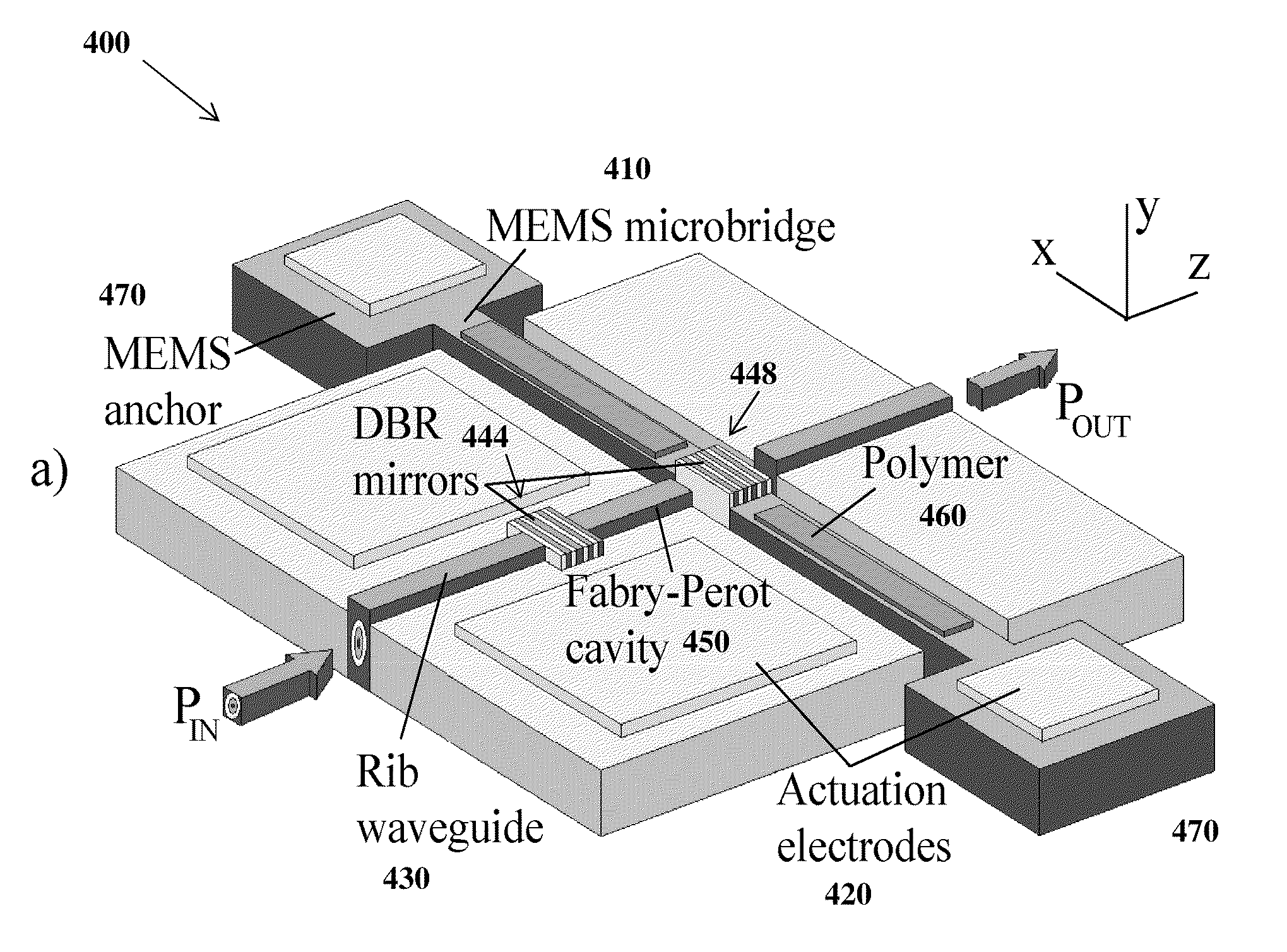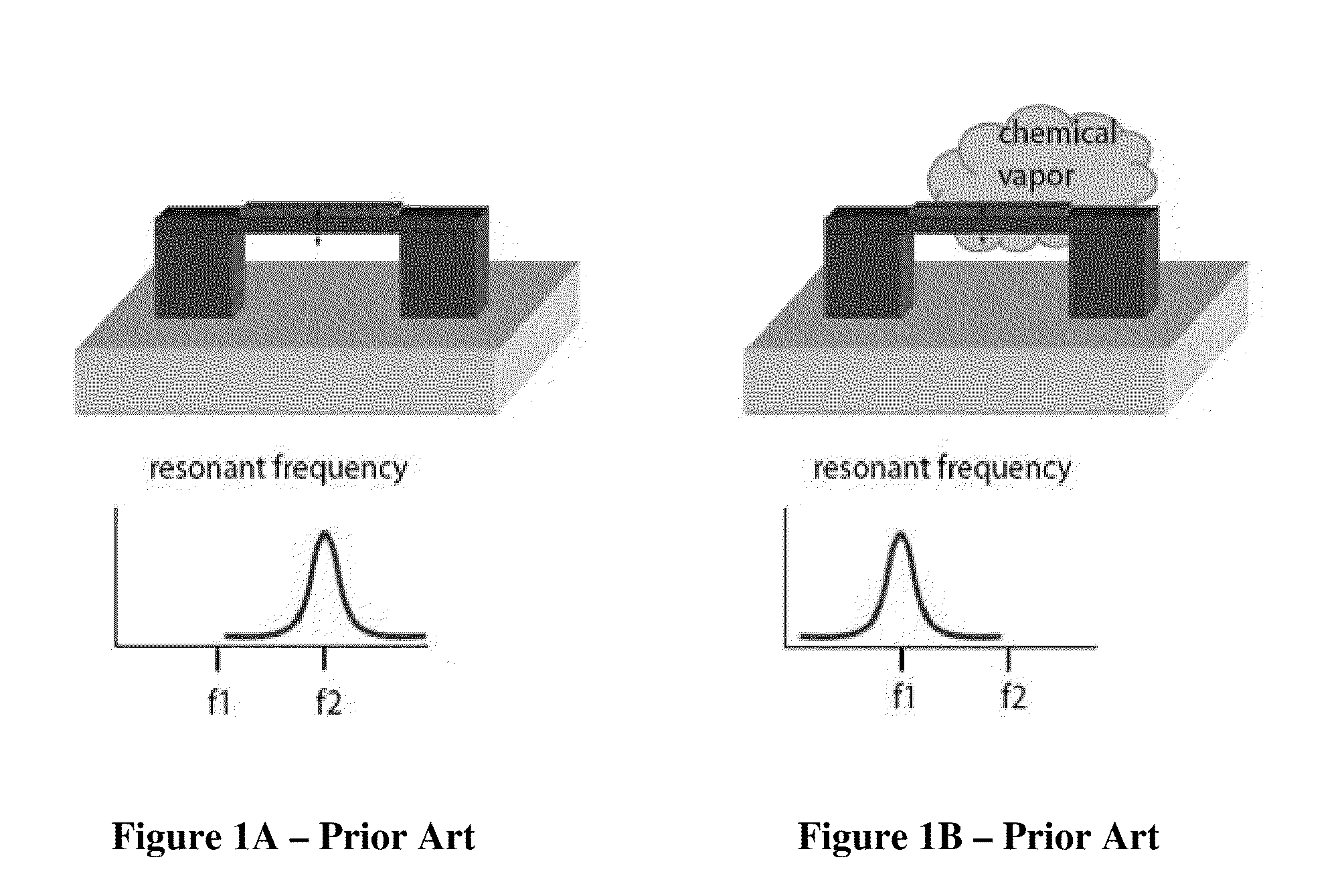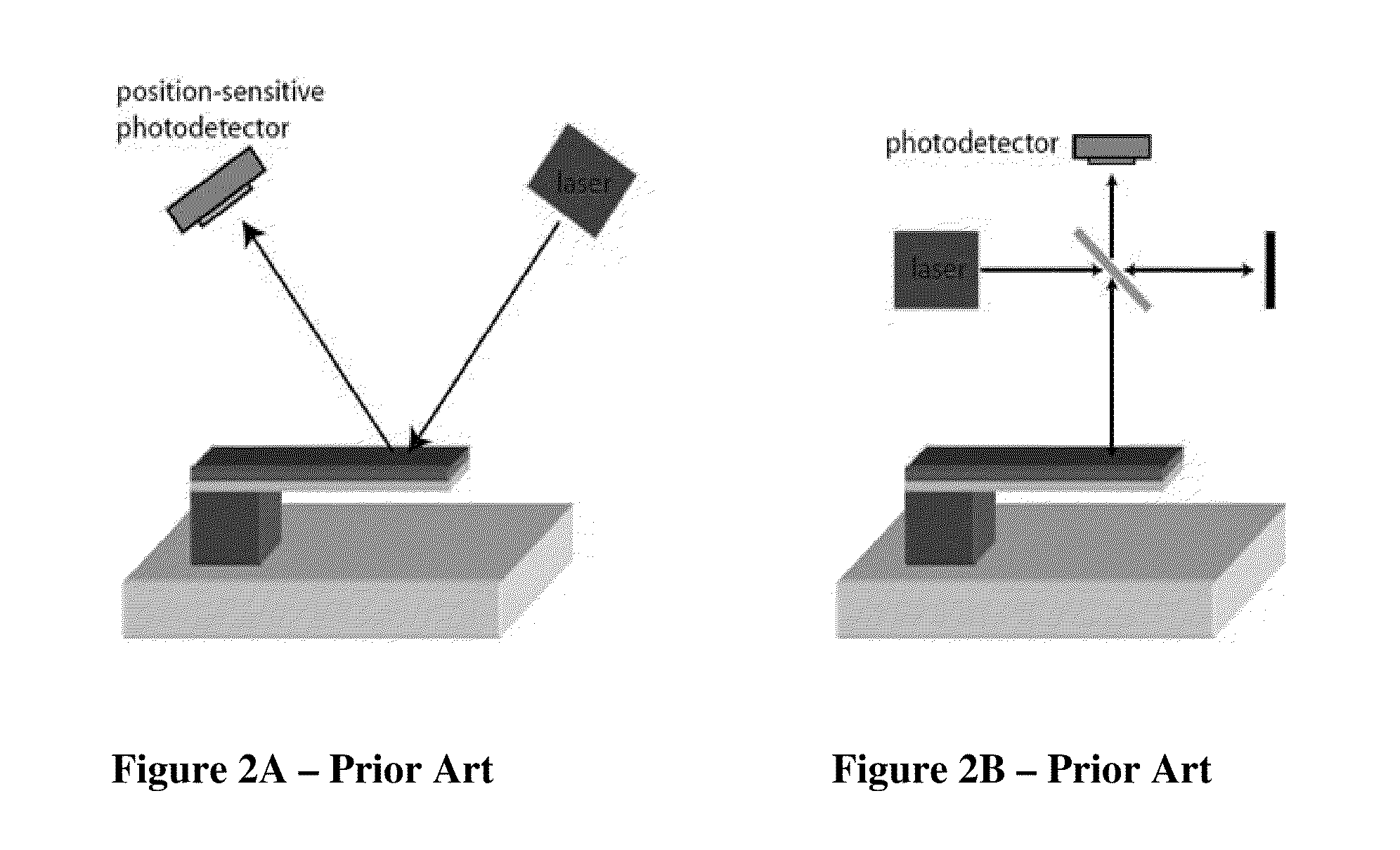Optical MEMS Chemical Sensor Array
- Summary
- Abstract
- Description
- Claims
- Application Information
AI Technical Summary
Benefits of technology
Problems solved by technology
Method used
Image
Examples
Embodiment Construction
[0030]Referring now to the drawings, in which like numerals represent like elements, aspects of the exemplary embodiments will be described in connection with the drawing set.
[0031]The present invention has the advantage of enabling the interconnection of many (e.g., potentially hundreds or more) sensors via integrated optical waveguides. At the same time, extremely high displacement sensitivity can be obtained via interferometry using an integrated Fabry-Perot microcavity interferometer. To take advantage of both of these features, an in-plane waveguide Fabry-Perot microcavity interferometer is utilized. One of ordinary skill in the art will understand that a Fabry-Perot microcavity interferometer can be known by other interchangeable names with the same meaning, such as Fabry-Perot microcavity, Fabry-Perot cavity; Fabry-Perot etalon cavity, Fabry-Perot optical cavity, as well as others.
[0032]FIG. 4 is a schematic of a MEMS sensor 400 in accordance with an exemplary embodiment of t...
PUM
 Login to View More
Login to View More Abstract
Description
Claims
Application Information
 Login to View More
Login to View More - R&D
- Intellectual Property
- Life Sciences
- Materials
- Tech Scout
- Unparalleled Data Quality
- Higher Quality Content
- 60% Fewer Hallucinations
Browse by: Latest US Patents, China's latest patents, Technical Efficacy Thesaurus, Application Domain, Technology Topic, Popular Technical Reports.
© 2025 PatSnap. All rights reserved.Legal|Privacy policy|Modern Slavery Act Transparency Statement|Sitemap|About US| Contact US: help@patsnap.com



